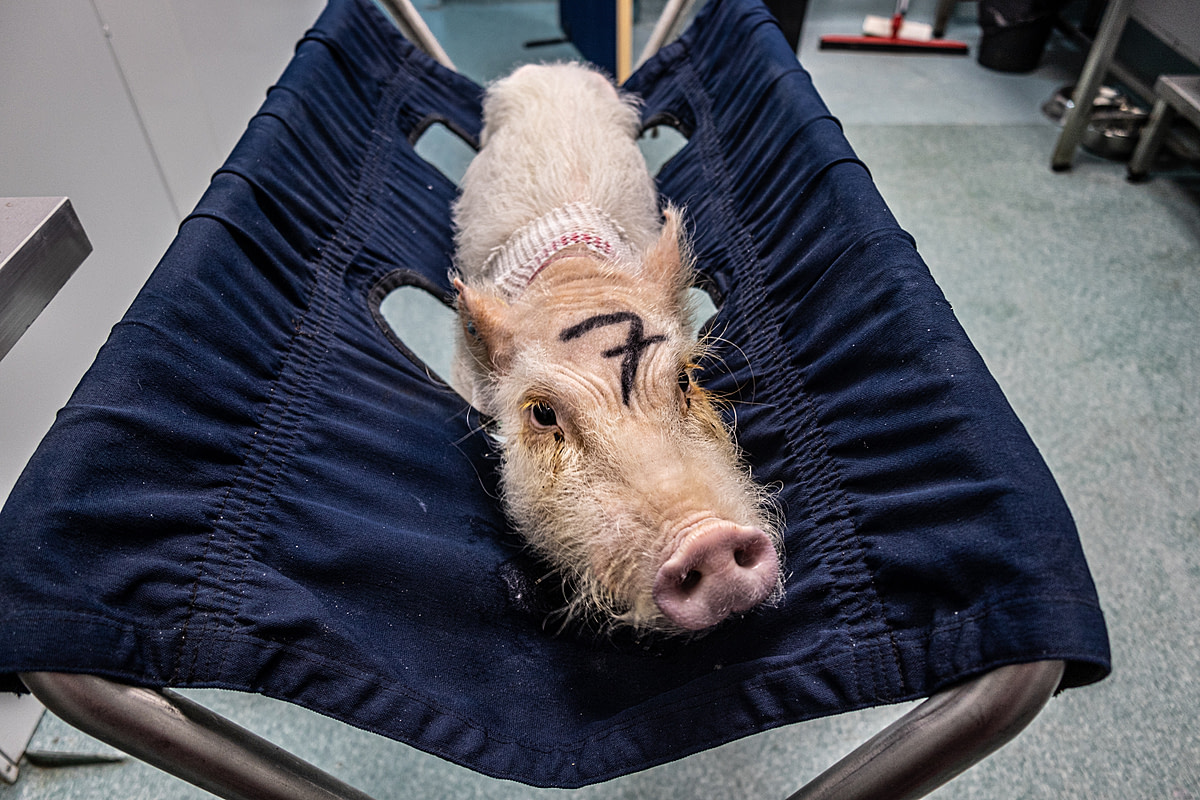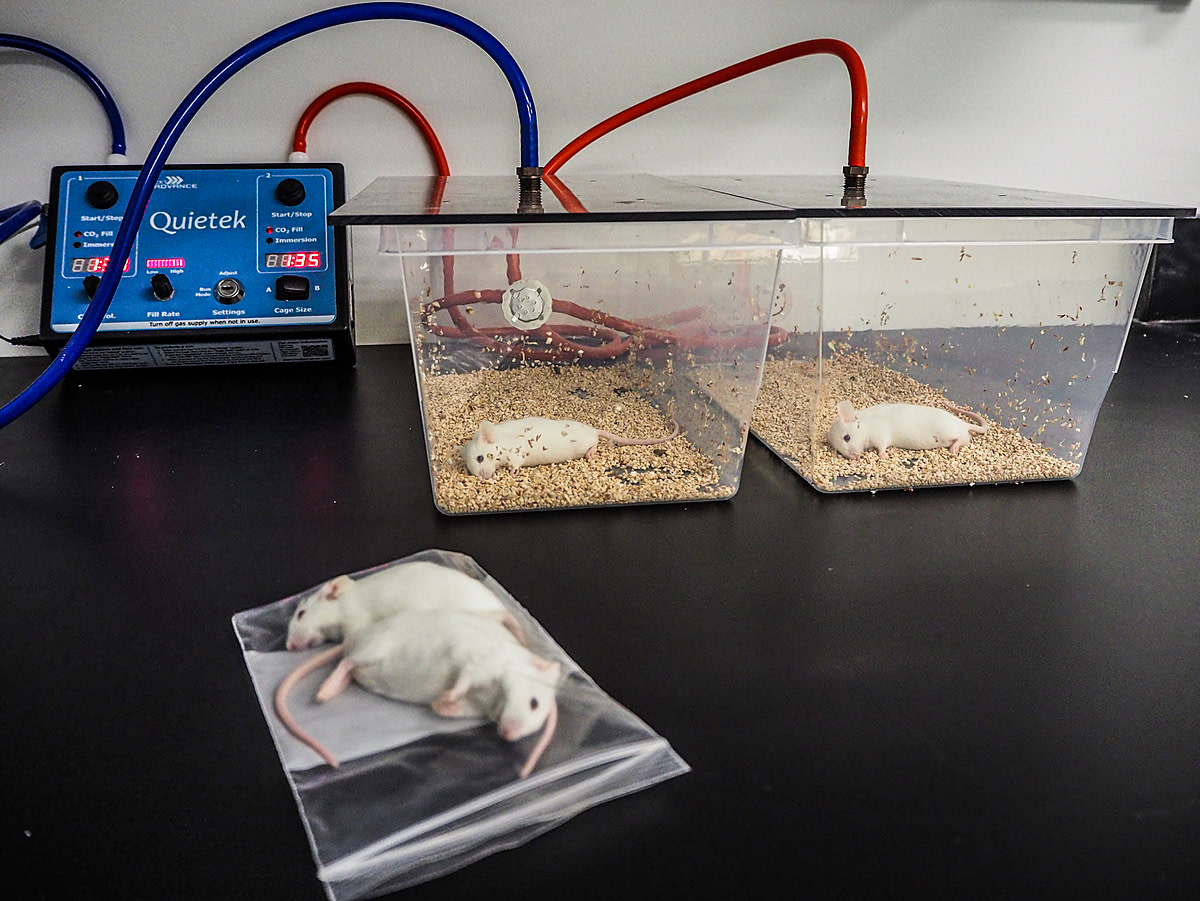Our Top 10 Images For World Day For Laboratory Animals
[Content warning: Includes confronting images]
World Day for Laboratory Animals (WDLA), also known as World Day For Animals In Laboratories (WDAIL), is observed annually on April 24 to commemorate the hundreds of millions of hidden animals who have suffered – and continue to suffer – in the name of research. These animals regularly endure painful and frightening procedures, often isolated in small or barren confinement. Here are just some of their stories.
Ron, a chimpanzee rescued from invasive research, in his nest of blankets at Save the Chimps in 2002. During Ron’s time at the research facility, he spent many years living in a cage suspended above the ground. He endured invasive surgery and was anesthetized 105 times. At Save The Chimps, although he had several acres of sanctuary space in which to roam, he usually chose to stay indoors. Every day, he would carefully arrange his blankets in a circle to form a nest. And it was in this nest that he died in October 2011, peacefully but prematurely – a common fate for rescued chimpanzees used in research. USA, 2011. Jo-Anne McArthur / We Animals Media. This photograph was the winner of the 2021 AEFONA Photography for Conservation competition (Man & Nature category).
A sick monkey in quarantine at a macaque breeding facility. When we imagine animals in labs, we tend to picture the cold metal cages and white walls of a medical facility. What we don’t think of so often, and what is much less well-known, is where many of these animals come from and how they are housed before they arrive at the labs. Lao People’s Democratic Republic, 2011. Jo-Anne McArthur / We Animals Media.
Abbey’s ear tattoo. For the first year of her life, Abbey the beagle lived in a small dog run at a veterinary school, where she was used as a teaching candidate for the spay program. Sometimes, she was given occasional walks by volunteers, but she never left the university. In 2021, Abbey was adopted. Her time as a research subject had ended, and she became a family dog. Canada, 2012. Jo-Anne McArthur / The Ghosts In Our Machine / We Animals Media.
A farmer showing his product at a macaque breeding facility. The long-tailed macaque is the most heavily traded monkey used for research worldwide, with the number of individuals being traded globally continuing to rise since the COVID19 pandemic. Lao People’s Democratic Republic, 2011. Jo-Anne McArthur / We Animals Media.
Using animals for research assumes that animals are enough like us to make test results relevant for human application, but different enough from us that it is ethically acceptable to confine, injure, and kill them.
The future of animal-free scientific research relies on approaches that embrace modern technology and increase reliability. Thanks to the important work of organizations such as the Canadian Centre for Alternatives to Animal Methods, Animal Free Research UK, Rise for Animals, Center for Contemporary Sciences, and more, the future looks brighter both for animals and scientific advancement. But there is still much work to be done.
As always, our visuals are available for free to anyone working to inspire compassion, conversation and change.
This World Day for Laboratory Animals, help tell these important stories. Visit our Research and Vivisection gallery to view and download these images (and more) or search specific keywords to get the visuals you need.
Donate today and help us continue to tell the stories of hidden animals worldwide.
More like this from We Animals Media:
Our Top 10 Images For Earth Day
by We Animals Media | Apr 18, 2022
Our Top 10 Images For World Wildlife Day
by We Animals Media | Feb 28, 2022













